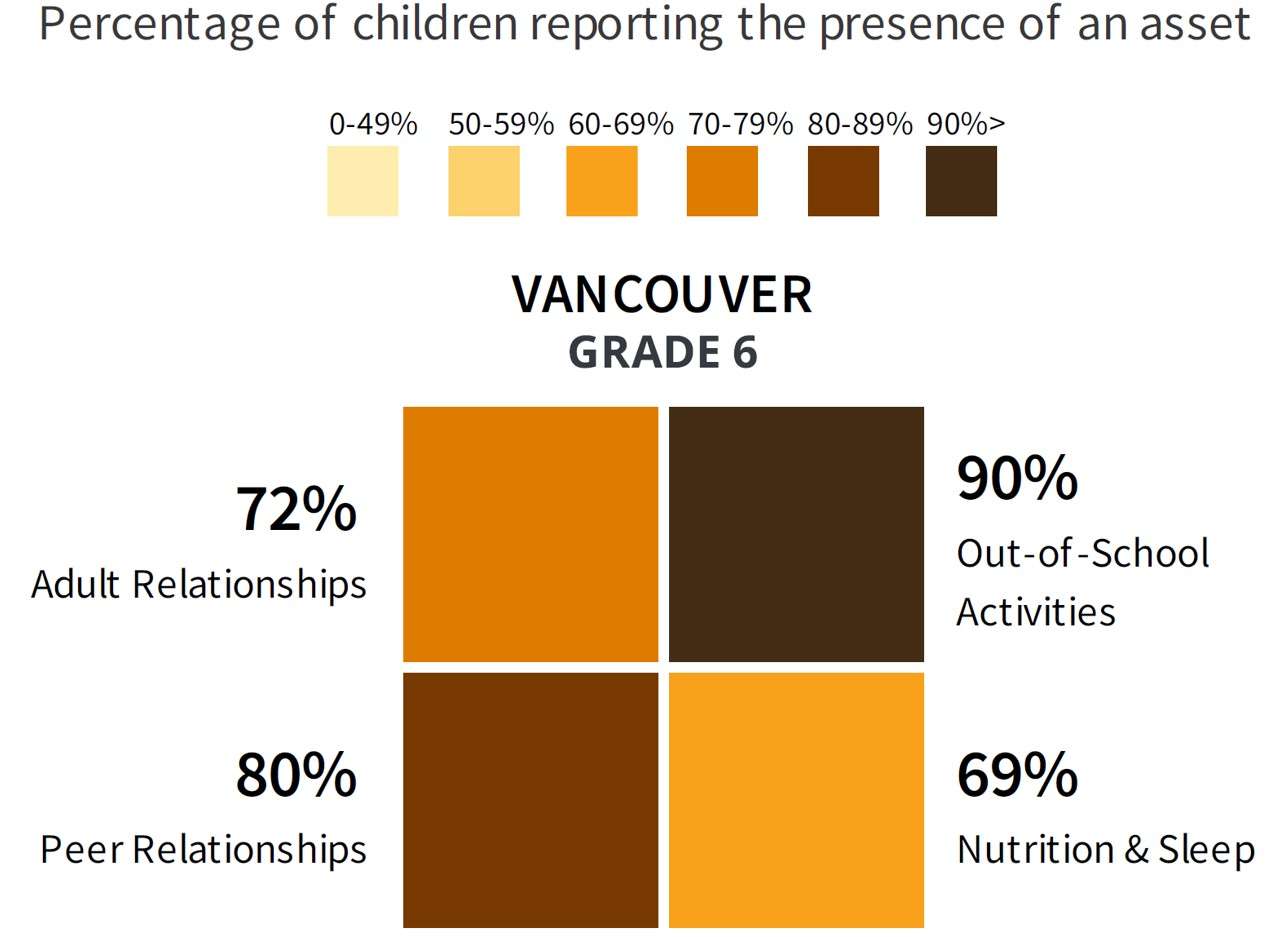
The Assets Index
The Well-Being Index combines measures that represent the overall well-being of children themselves. In contrast, the Assets Index combines measures that represent important external factors that can support children’s well-being, and includes the following five areas: Adult Relationships, Peer Relationships, Nutrition & Sleep, Out-of-School Activities*, and School Experiences.**

Adult Relationships
Adults at School
Adults in the Neighbourhood
Adults at Home

Peer Relationships
Peer Belonging
Friendship Intimacy

Nutrition & Sleep
Eating Breakfast
Meals at Home with Your Family
Frequency of Good Sleep

Out-of-School Activities
Organized Activities
* In the 2022/23 reporting year, the MDI questionnaire was changed to ask children about their activities outside of school hours. In previous years, children were asked about their activities only during the hours of 3 pm to 6 pm on school days. As a result, the Out-of-School Activities Asset data are not comparable to the After-School Activities Asset data from previous years.
** The School Experiences asset data are not reported as part of the Assets Index to deter the ranking of individual schools or districts. You can learn more about the measures in the School Experiences Dimension of the MDI here.
Reporting on Assets Index Data

For more detailed information on how the Assets Index is scored and how the results are visualized, please consult the MDI Companion Guide and the MDI Data & Reports page

